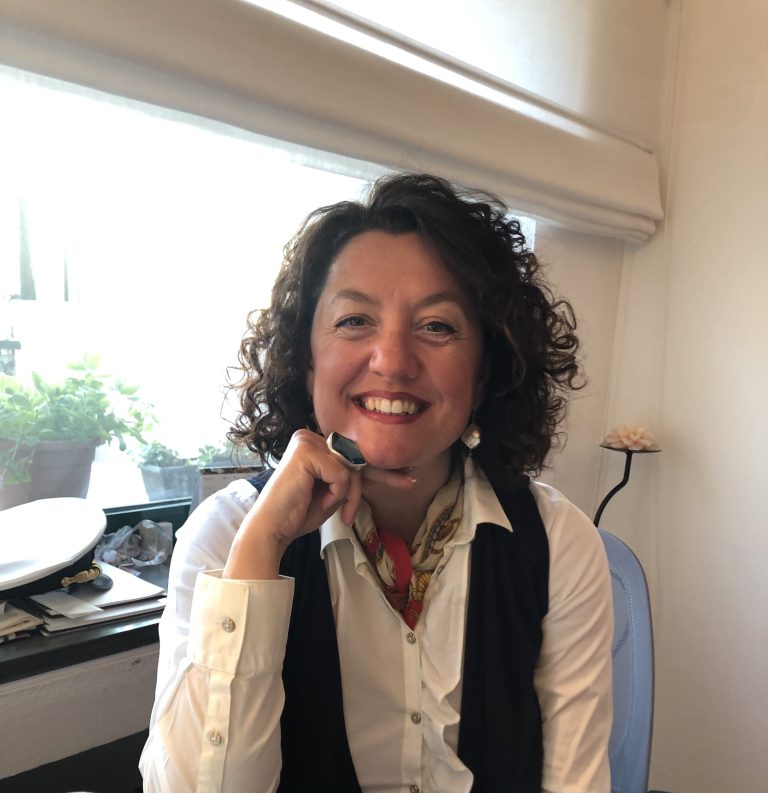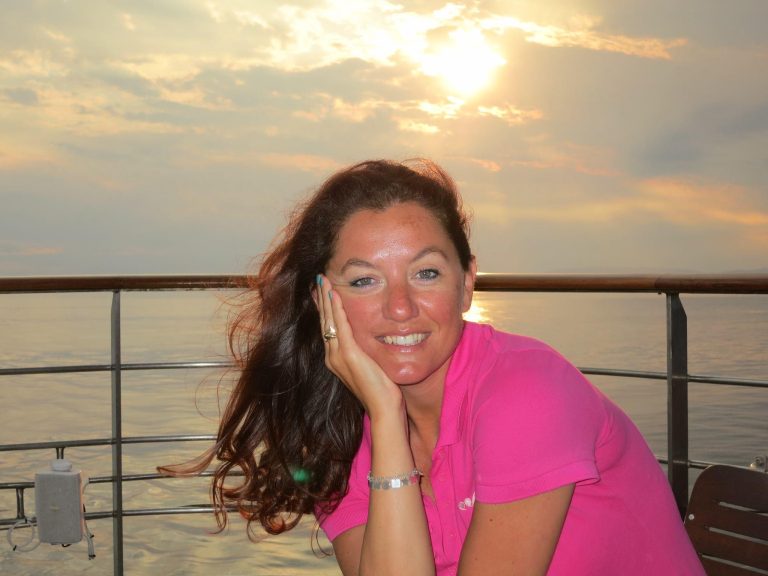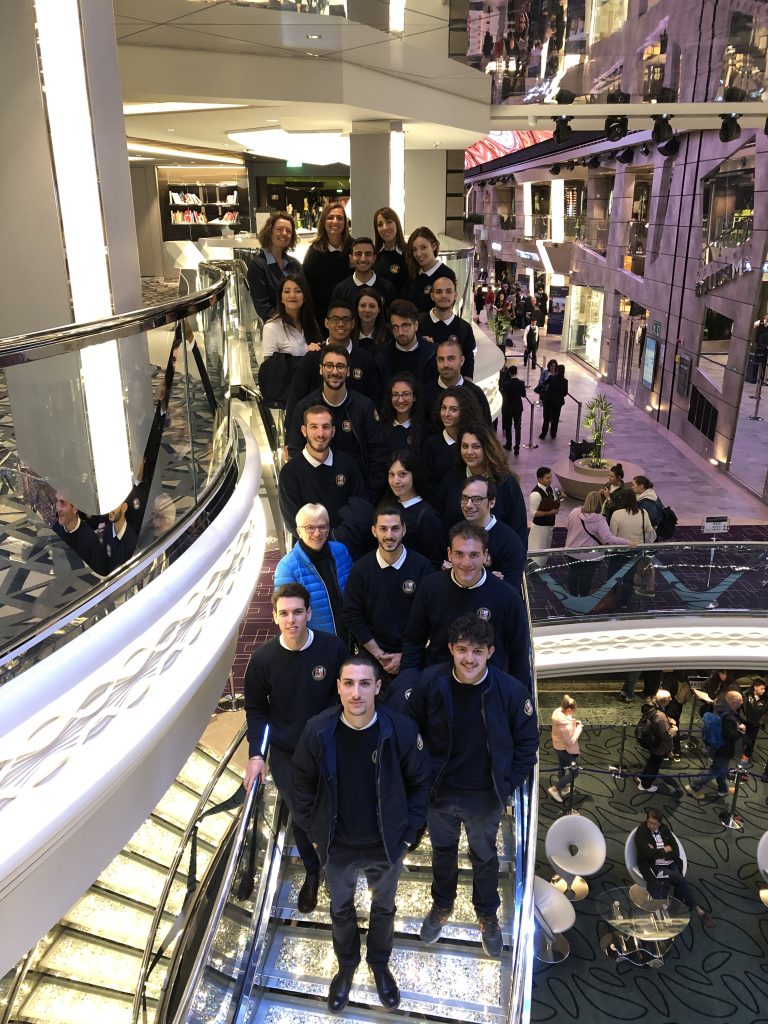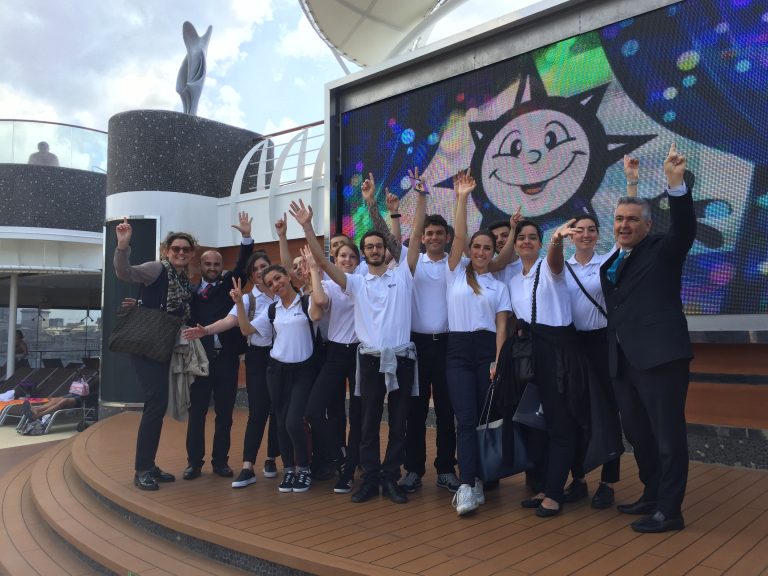From ship to training: Federica Giammarioli’s journey
Those who work at sea know there is a fine line between profession and identity. Life on board is never just a job: it is a way of being in the world. It is not simply about doing shifts, serving, coordinating, or leading, but about inhabiting a space that is simultaneously a workplace, a home, a community, and a journey.
The ship is a floating microcosm, where roles, cultures, emotions, and challenges intertwine every day. It is a closed and total environment that demands coexistence, discipline, and resilience, while also offering profound experiences of growth and belonging. In this universe suspended between land and sea, between rules and freedom, people learn to trust one another, interpret silences, and manage distance. They grow together, sharing not only work but life itself, with its intense rhythms, waiting, and discoveries.
Federica Giammarioli has navigated this world in all its dimensions: first on board, taking on operational and leadership roles, and later on land, focusing on training, growth, and the development of people. Her story is both a professional and a human journey—a path that combines a passion for the sea with the ability to understand the spirit of those who live it every day. In this interview, we explore not only her career but, above all, the perspective with which she lived it: a perspective that transforms work into vocation and the ship into a school of life.
How did your connection with the sea begin? I’m not just talking about choosing to work on ships, but about that spark: the moment, the person, or the image that made you feel that in that world, suspended between reality and motion, there was something that truly belonged to you. Could you tell us where it all started, and how that first impulse later became a stable and profound career?
It was actually an image—a true love at first sight… I was studying at home for my high school Tourism exam when, during a break, I flipped through a popular women’s magazine and there it was: a photo of a beautiful white ship cutting through a sea so blue I can hardly describe it. I remember that exact moment. They were looking for shipboard staff. I had never thought it was possible; I had never even heard of this opportunity. But languages and tourism had always fascinated me. Born and raised in the Florentine countryside, and always in contact with tourists from all over the world, I couldn’t wait to set off and explore new places.
I started sailing in 1995 in the Animation Team, supporting the Excursions Team, and it’s true: you never forget your first time. The emotions of that first boarding—the anticipation, the bewilderment, the curiosity… How was your first day on board? I was amazed and disoriented, body and mind in turmoil from exploration, where even hunger seemed secondary. I still remember walking down the same corridor over and over, trying to find the bow. I had little time to find my cabin and change to welcome the guests. Somehow, I managed to put on a very tight skirt, and then—“Welcome on board!” “Cheese”… That’s a memory of my very first task on board. I can’t say whether exhaustion or ecstasy prevailed at the end of the day; both were intense, accompanying me in that first step of what would become an endless cruise.
First DayRiviera
Before working in training and people development, you experienced life on board from the inside, living the roles and rhythms of shipboard life. Can you tell us which positions you held, what it meant to be “on duty” every day, and which human, relational, and even emotional dynamics you encountered along the way? What concrete lessons shaped you—through both challenges and successes—and continue to guide you today?
The first month on board was a real shock. I seriously considered quitting, but once I got past the initial bewilderment, I never stopped for 15 years. A passion for the sea, navigation, a fascinating and thrilling new world—and an even stronger passion for the amazing, diverse, and unique people I met in dreamlike places around the world. My love for tourism took me far, and my love for shipboard life and communicating with others quickly led me to become a Cruise Director, after starting as Head Animator and Assistant Cruise Director. Life on board isn’t just a vacation—it’s a mirror where travelers’ humanity reflects their personal dreams. You share in their conscious lightness—the joy of wanting to be happy. Behind the fascinated eyes in the ship’s atrium during embarkation, I saw people dancing alone on empty ballroom floors, performers finally finding an audience to showcase their arts, people rediscovering love, and others moved by the simple farewell of an officer: “It made me feel important.”
Being “on duty” every day isn’t easy when you’re tired. The Cruise Director, in particular, is often still on duty even when stepping ashore for a short walk, because everyone recognizes you. It takes time to disconnect and activities that recharge you. But it was a role I loved deeply and felt very connected to.
I remember one concrete lesson from early in my career as Head Animator. I was reprimanded for a mistake made by a member of my team, and it wasn’t easy to handle. At 23, I was used to being accountable for my own errors, not those of others. One of the ship’s Directors patiently listened to me, advised me, and taught me one of my first management lessons—one I still remember today.
Cruise Director
NationalGeo
The transition from life on board to a more managerial and project-based role on land is enormous: time, space, the perception of relationships, and even the sense of being part of the ship all change. How did you experience this shift internally? What did you miss, and what did you discover as a new space for growth? And above all: which aspects of your “shipboard mindset” do you still use today when coordinating teams, programs, and projects?
I decided to stop sailing when I felt saturated with that type of life and work—without regret, but with immense gratitude for everything I had experienced. It wasn’t an easy choice; I didn’t know exactly what I would do next, but I needed a change… a life change, yes, but not a change of sector! Over the next five years, I collaborated with various land-based departments, taking on a wide range of roles that allowed me to discover cruising from a completely different perspective. Mainly with the HR department as a Training Consultant, Recruiter, Coordinator, Tutor, and Instructor for pre-boarding training courses for new hires in various roles within the onboard Hotel Department—a role I still hold today. I also worked with the Marketing and Sales department as a Digital PR and Web Community Consultant, Blogger, Web Radio Promoter, Loyalty Program Ambassador, and Special Events Coordinator. It was an amazing and dynamic period that involved extensive travel, both on board and on land. I organized cinema and culinary cruises, traveled through Italian cities for customer loyalty activities and escorted guests onboard, supported the artistic and graphic agency in producing the new catalog, interviewed guests departing on world cruises, and shared their excitement—all activities I remember with great engagement.
During my years on board, I developed a proactive mindset: rapid problem-solving, frequent schedule changes, fast-sharing of information, effective teamwork, multilingual communication, and coordination skills—all of which continue to be immensely valuable in my work today.
8 IMG_2277
Guest Interviews
For those who have never worked on a ship, life as a crew member is often imagined as an orderly routine, when in reality it is a true community in motion, built on delicate balances, intense coexistence, wonderful moments, and challenging ones. If you had to explain the “psychology of the ship” to someone who has never been on board, where would you start? What are the dynamics that hold a crew together, and which ones can undermine it?
Being part of an international crew was an exceptional stimulus for me: new languages, many cultures, customs, and celebrations—you feel part of the world, and you do so while traveling and creating memorable experiences for the guests.
Harmony, of course, can be compromised if respect and communication are lacking.
Among all the episodes, relationships, and stories that life on board brings, is there one that still stays close to you—one that comes to mind when you help someone grow, face a conflict, or guide someone through change? If you like, tell us about it—not so much as a chronicle, but as an experience that still speaks to you today.
When I transitioned from Cruise Director to becoming a Trainer, I remember one behavior that impressed me and that I decided to adopt. In the classroom, there were about ten students, and one of them was very weak—she almost never spoke up, and after a couple of days, she seemed hopeless. Our instructor never stopped believing in her, encouraging her, including her, and acknowledging her. Honestly, most of the class, including myself, had already lost patience with the dead time it caused. But, incredibly, the results came—and they were lasting.
In your current role, you operate in a deeply multicultural environment, where people from dozens of countries, languages, and backgrounds must learn to cooperate, communicate, and support each other. In your opinion, what is the most delicate challenge when it comes to developing talent on board? Is it motivation? Adapting to rotational life? A sense of belonging? The ability to become a leader without losing empathy?
Time! It’s easy to feel discouraged when you don’t yet understand or know the ship as a workplace and home, nor your colleagues or the Guests. The beginning is difficult for everyone: procedures to learn, people to get to know, accents to understand. Today, you see the rush toward promotions, but not everyone is ready. In development, I believe it’s essential to give yourself time.
Many young people enter the cruise industry thinking of it as a temporary experience. You, however, are proof that it can become a long, solid career, full of growth and evolution. If you had someone starting now in front of you, what three very concrete pieces of advice would you give them to build a real, lasting, and rewarding path?
Giving advice is never easy. For me, curiosity, relationships, and constantly aligning with your own “inner voice”—especially when it’s been difficult to hear—have been the most helpful.
5Goldenhourpoppa
Today, training must bring together many dimensions: operational skills, safety, service quality, communication, intercultural sensitivity, and emotional management. How do you balance all of this harmoniously? And what signals do you observe on board to understand whether a training program is truly working “in real life” and not just on paper?
Bringing all these dimensions together is possible with preparation and consistent effort. I have been—and still am—actively involved in designing ITS programs and overseeing their implementation. These are comprehensive, highly professionalizing courses that I fully recommend.
Every time I meet a former trainee on board, I can only confirm with satisfaction the skills they acquired in the classroom. The signals I observe come from them: messages, emails, phone calls updating me on their personal and professional growth, and in some cases, rapid promotions.
6ITS Commissari
7Corso Animatori
In recent years, new technologies, digital tools, micro-learning methods, and hybrid systems combining classroom and on-the-job training have emerged. Which of these innovations have truly enhanced people’s ability to learn and engage? And what, in your opinion, remains irreplaceable in direct contact, in relationships, in looking someone in the eye?
Many digital tools help and simplify learning, even if they still need fine-tuning depending on the objectives. Being able to study on a platform whenever one has time is very useful, especially while working, as is the ability to simulate a reality or situation virtually.
However, I believe that learning together—sharing experiences, perspectives, places, perceptions, and emotions—remains irreplaceable. The connection that develops engages all the senses, optimizing results even when combined with new technologies.
Crew wellbeing has a direct impact on passenger experience, not just on internal morale. How is resilience, stress management, personal balance, and the ability to maintain healthy relationships fostered today in such a unique environment? Are there techniques, rituals, or small attentions that you consider crucial?
Crew welfare programs have grown tremendously, and the results are tangible. There is still plenty of room to do even better and more in this direction—starting with the design of crew areas.
It is important for crew members to feel heard and to be able to contribute to improving living conditions on board, regardless of their role, as human beings sharing a journey.
Looking ahead to the next five years, with increasingly advanced ships, more digital processes, sustainability at the center, and new forms of automation, which skills do you think will become essential for those working on board? And what will be, in your view, the role of someone like you who guides people and talents through this transformation?
We are entering extraordinary times. Evolutions, automations, and processes will need to be absorbed—sometimes quickly. Specific technical skills will be in high demand. But I wouldn’t underestimate creativity, which allows us to apply and use those skills to their fullest potential.
Our highest role is to awaken the talents that seek to be seen, to instill the drive to find one’s own motivation—even if it means making a complete change of direction. To prepare, to help people make choices, and always do it with heart, navigating a life that sways like the sea: sometimes a gentle rocking, other times a relentless wave.
Thank you, Federica, for sharing with us your journey of the sea, people, and personal growth, and for reminding us that, on board as in life, the most authentic course is the one charted by the heart.
Don’t miss the latest news, updates, and reviews of the world of cruising on Cruising Journal, with photos, videos, and cruise offers.








